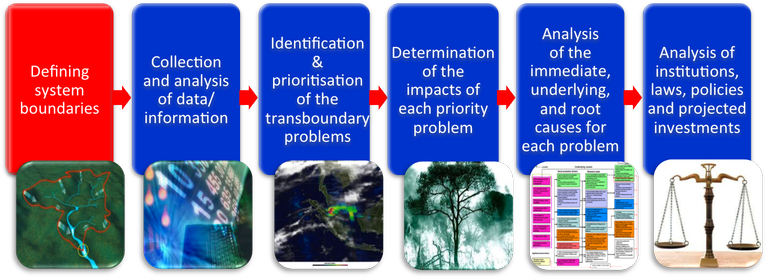Defining system boundaries

In order to identify the geographical scope of the TDA and SAP it is important to ensure the system boundaries are well defined and agreed by all parties.
System boundaries can be defined in a number of different ways according to the problem being managed. In particular, when trying to develop policies for reducing environmental pressures, it may be necessary to work within larger boundaries that encompass the source of the problem, as well as the problem itself. This is particularly relevant for land-based sources of pollution effecting coastal zones or LMEs. Other examples include the global transport of invasive species, which cannot be tackled without actions at the global scale and certain aspects of coastal pollution that may only require actions in one district or municipality of a single state.
It is likely that the system boundary was defined in the original Project Document but it would be sensible to revisit this issue when starting the TDA development. Any change to the system boundary will need to be agreed by all participating countries and by the GEF Agencies associated with the project. If there is an issue regarding the system boundary (for example it cannot be changed for political or legal reasons), the TDA Development Team will need to consider the implications of this during the TDA and subsequent SAP.
Two examples of defining system boundaries are shown Here.

























